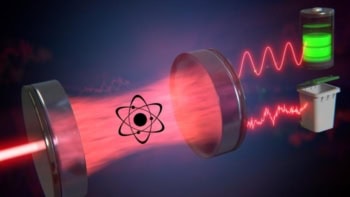A superficial knowledge of the Greek language – alpha particles, beta decay, gamma rays and so on all the way to Omega Centauri – is essential for any scientist. But Ricardo Mansilla, a mathematician at the National Autonomous University of Mexico, has taken a much deeper interest in this ancient language. Working with Edward Bush, a classicist, Mansilla has used methods from statistical physics to analyse the difference between classical Greek and Latin poetry (arXiv.org/abs/cond-mat/0203135). Mansilla and Bush hope that their techniques may be able to shed new light on unanswered questions about two of the most famous poems of all time - the Iliad and the Odyssey.
Mansilla and Bush examined poems that used a form of verse known as the hexameter. Each verse in this form of poetry contains six meters or “feet”, which in turn are made up of two or three syllables that can be long or short, and stress or unstressed. The long syllable is always at the start of the foot and is always stressed, while the short syllables are unstressed. This means that the rhythm of the hexameter is “TA-ta-ta” or “TA-ta” depending on the combinations in each foot. This allowed Mansilla and Bush to translate the poems they studied into a three-letter “alphabet” in which zero represented a long syllable, one was a short syllable and two was a pause or a “caesurae”. The pair then analysed the poems using techniques from information theory.
Their analysis involved calculating quantities such as the mutual and partial information functions of a string of characters, and then computing their Fourier transforms to look at the temporal and rhythmical patterns of the strings. The same techniques have recently been used by physicists to analyse the information content in DNA.
Mansilla and Bush studied the first hundred verses of four Greek poems (the Iliad and the Odyssey by Homer, Works and Days by Hesiod, and Idylls by Theocritus) and four Latin poems (the Aeneid and the Georgic by Vergil, Metamorphoses by Ovid, and On the Nature of Things by Lucretius). They found that Latin poetry was more complex than Greek poetry, mainly because Latin poets tended to “break the rules” more than their Greek counterparts. The authors speculate that since written verse did not exist at the time of the Greeks, the more rigid rhythmical structure found in the Greeks poems enabled them to be memorized and recited more easily.
Mansilla and Bush now plan to turn their attention to Homer. Classical scholars have debated for some time whether Homer actually existed and when and where the Iliad and the Odyssey were composed. “There is considerable debate on whether the Iliad and the Odyssey were composed by one author or many,” says Mansilla. “We feel that the present study can throw light on the question regarding singular or multiple authors of the two poems. Given our results, it is probable that the Iliad was composed by one rhapsode, while the Odyssey was composed by many.” However, Mansilla stresses that the results in their paper are preliminary and that they are going to study other ancient poems and poets.
Anne Mahoney, a classicist at Tufts University in the US, says that she welcomes the application of mathematical techniques to the study of metrics, so long as it is done well. “The word ‘complex’ is perhaps unfortunate, since it is clear to a classicist that Latin hexameters are less complicated than Greek, not more complicated,” she says. “The metrical rules for classical Latin poetry were deliberately borrowed from Greek, starting somewhere in the third century BC. Over the next few hundred years, Latin poets gradually came to apply the rules more and more strictly, with the result that there are many types of hexameter lines that a Greek poet could use more freely than a Latin one.”
Mahoney also points out that Latin has more long syllables than Greek, which could explain some of the differences noted by Mansilla and Bush.



